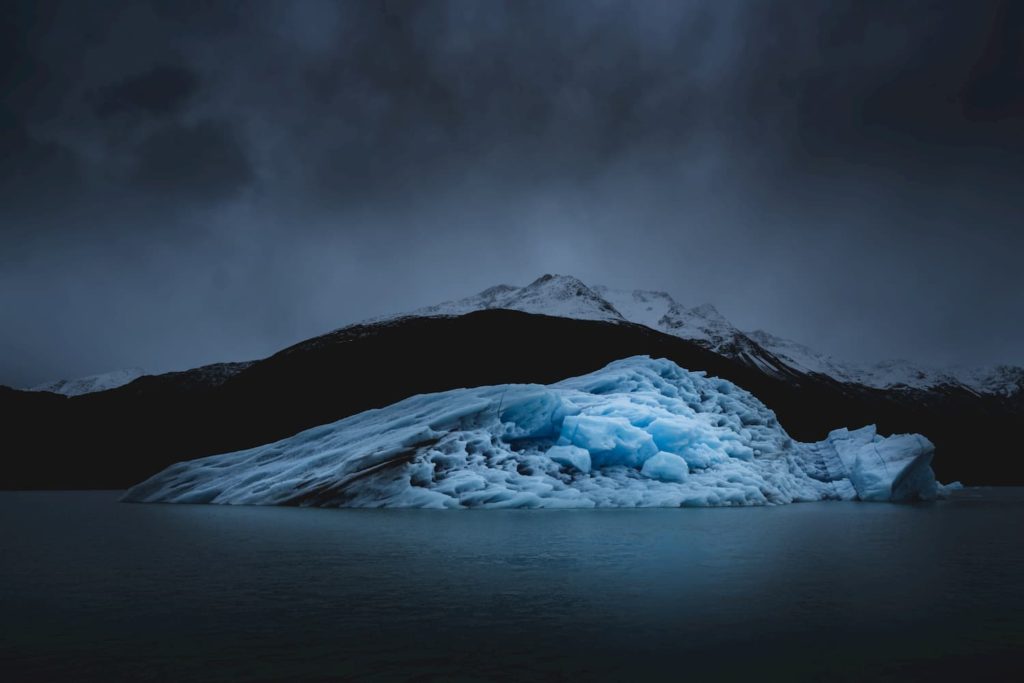
© 2020 Nomadict. All rights reserved.
Thanks a million to every single one of you for your support! We are soon reaching the conclusion of our third ‘Best of the Week Contest’ and as of today, more than 399k entries have been presented using #nomadict!
We are truly grateful for that, and for the good vibes within the Nomadict community. So today, we would like to celebrate this with all of you, creator or not! Together with @debc_nz, @macelliotmedia, @manotama13, @antoniootgianu, @withmatt, and @__marcoritter__, we have put together some great prizes for a special giveaway! Special greetings to Loupedeck for participating in this event.
Below we will introduce you to the photographers and the six prints carefully selected for the GIVEAWAY. You can also learn more about Loupedeck below.
Are you ready to be inspired by their pieces of art as we discover their artistic perspective?
This is Wharariki Beach near the top of the South Island of New Zealand. I had been here before at the very beginning of my photography journey and although I had some reasonable images, my style has developed as I’ve learned. Plus, I wanted an image with the X factor.
Most photos taken here are from down on the beach where you can get some gorgeous reflections. The beach is wide and golden but because of this there is no foreground. However, there are impressive sand dunes and so I decided that this is where my point of difference would be. I wanted to be above the beach where the grasses would provide that much needed foreground third.
It was about a 20 minute walk in for sunrise. I arrived very early. It was almost still dark which made finding my composition a bit more challenging but in the end I only had to move a few feet to line things up. The pre-sunrise light was perfect; a hint of color in the wet sand and a slight glow lit up the sky. I was grateful there were no clouds as I would usually go for quite a long exposure. There was the tiniest of gusty breezes so this wouldn’t have worked as the clouds would move. It was still pretty dark and I needed 30 seconds. I took about six images, discarding most to get this one where the grasses were completely still.
Personalizing this image is where things got more interesting. I follow quite a strict base editing workflow; I darken the highlights, lighten the shadows and a little black for depth. I check for spots, do the lens corrections and review the histogram. I shot this using the natural light setting for truer color.
For this photo, I added some vibrance, and lightened the wet sand. I had to add some grasses to a small gap and lightened areas of them, adding warmth so they didn’t look washed out. It is more detailed work, keeping the bottom darker so it draws you into the image while not overdoing it so things stay looking natural. This part in particular taught me to be patient; I had this vision for these grasses and it required quite delicate lightening work which took time. Then I lightened the rocks where the sun hit. This was important as the rocks are the main focal point.
All together, a huge difference from my previous visit! And to add a small anecdote, the first time I came here I had a wave wash completely over me!
This photo was taken like many others, by coincidence. It shows one of my most favorite starting points to go hiking and the spot where – most of the time – I take the first shot as a warm-up. It is still very close to the parking place, before entering the rural mountains surrounding the Churfirsten in Switzerland Toggenburg. I have developed a feeling for the right moments and so it happened to be caught by my lens at the right time at the right spot.
The whole day started by taking this unique shot of the scenery and continued with having fun hiking in nature while taking another bunch of nice photos. However, the day ended in misery when my car got stuck in the parking spot when trying to get out and slipped down a little. I had to call the road assistance to pull my car back onto the parking lot. But by mistake, the car run down the escarpment even further and I had to jump out of the car in order not to get hurt. Another road assistance had to be called with a crane to retrieve back my car. So my hiking adventure was complemented with five hours of organization, waiting, and worrying, until 2 a.m. at night.
I have developed a lot of presets for my editing process that helps me to get started and then to work out the character of each photo individually a little further. In most cases, my editing workflow goes as follows:
After selecting the right photo and perspective on a scene, I pay attention to the sharpness of the photo. Sometimes I crop a photo first before moving forward, but I believe it’s better to choose the crop at the moment you take the photo. The only exception being the Panoramamodus: More pixels, so more possibility to cut without loss. Then I adjust the exposure. Depending on the situation, I underexpose my photos by 1-2 stops. The next step would be checking whether some of my previously created presets fit, which can help me find the style of editing. Then I select and work on image areas with filters: foreground, middle ground, background, sky. Finally, I slightly change colors until there’s a perfect pallet of matching colors that simply make you feel good when looking at the overall picture, and I work on the details which is mostly based on feeling – small adjustments can do a lot! For the post-processing from the beginning till the end, I use different software: Capture one, Affinity photo, and Luminar AI.
My job is to reveal the best side of my photos – the sparkle that I did see and feel in real life and needs a little enhancement in the photo. I consider this unique photo as a reward for another unexpected adventure in my life. I am happy to share it with you and hope to take you with me on my adventures through my photographs!
I captured this image on my birthday, and you could say the photos that resulted from my walk through the sunflowers was the best gift I could have asked for. My aunt and uncle care for land in south Texas, and every year they try their luck for sunflowers. This was their first try at growing these tall flowers, and despite the drought and heat, the harvest was bountiful. I remember standing at the edge of the wide expanse of field and being overwhelmed with the promise it held. I didn’t know where to start, so I just began walking through the rows and stopping every once in a while to study the position of the setting sun and how to best frame the image.
I was on my way out of the field when I stopped to capture this photograph. I tried composing the image without the intruding flower in the left corner, but it felt shallow. By using a foreground via the corner sunflower, I was able to achieve much more depth in the image. I broke the rule of thirds with the setting sun because I believe it gives the scene balance (and that some rules were meant to be broken).
In the two years since the image was captured, I have gone out in the field at peak season trying to take photographs that level up to the ones I took on that very first day. To this day I haven’t been able to achieve the same perfect conditions as that summer day years ago. I’m convinced that dramatic clouds and sunlight make all the difference when photographing this field.
I really wanted to emphasize the drama of the vibrant sunflowers and the darkness of the late hour in this image. So in the post-processing, I boosted the yellows and added a radial filter to enhance the exposure and texture on the field of flowers. For the setting sun, I chose to highlight the dramatic purple skies, adding gradient filters to soften the dark tones and reduce the clarity of the clouds. By adding a warm toned radial filter around the sun and under the clouds, I was able to push the sunny, summer feel even further. I added an underexposed gradient to the foreground/bottom of the edit to pull focus towards the middle sunflowers even more. To finish it off, I put a light vignette on the corners to draw the focus into the center of the image.
On most of my edits, I usually place a darker gradient on the top of the sky to add drama and framing. With cameras and editing software these days, it is much easier to bring back the darks in an image as opposed to filling in overblown highlights, that is why I often over expose for the sky in situations like this. I like to think of my edits being quite dramatic and larger than life (while still remaining realistic).
Overall, this image was once in a lifetime, and it taught me so much in composition and using all of your angles before you pack up for the day. With this photo I learned the lesson of taking in all of my surroundings and waiting it out. One of my most popular sunflower photos was captured at a different angle much earlier in the evening when the sky was still blue. If I had called it a day too early, I would have missed out on the brilliant sunset colors that were in store.
Some lions can’t be brought up in the wild and luckily, there are dedicated places where these animals are taken care of. Hartebeespoort is close to my home and hosts one of such lion parks. I really enjoy taking a trip out there with my friends. Driving around and getting really up close to the lions is a really special experience!
One day, this little lion cub came up close to our car and sat like that waiting for his food for the evening. It was too good of a shot not to take! The heat of the day really comes across in this image – and shows that it was taken in a warm climate such as South Africa. I knew I wanted to enhance this in post processing and work with warm tones.
In addition to focussing on the very warm tones I wanted to still give the photo a dreamy look – and an almost vintage touch – which is my normal editing style. The key for me was to make all the tones work together in a cohesive way by evening everything out a bit. I think it turned out exactly as I intended it to, which is always a great feeling upon achievement and looking at the result.
The most vital steps of my editing process is firstly getting the basic color temperature and exposure correct – then I go on to styling the image by adding a bit of haze and a dreamy feeling. Using the tone curve really helps me accomplish this. I tested my editing style in this image by trying to create the same effect I do in my landscape images in a portrait show of a main subject – which was quite difficult to do, and definitely a new lesson for me.
The photo entitled “powerful sea” was taken during the last weeks of summer at S’Anea Scoada, one of the most enchanting beaches in my area on the west coast of Sardinia. It is a popular destination for surfers and, of course, for photographers. Every time I’m in this place I feel free and intensely happy. I don’t think about anything else, I alienate myself from reality, I relax, and then I compose epic shots.
For this one, everything came perfectly together at the right time. The power of the waves, the ripples, the “sand clouds” that can be glimpsed amidst the foam of the waves that are crashing vigorously on the coast. And of course, there’s the surfer for the finishing touch. I flew the drone above and because of the fast changes in the scene, there’s no strategy behind the composition you see in the photo. It may have been luck, but I am very happy with the result.
I didn’t elaborate or complicate the edit too much; I knew what I wanted to achieve once I took the shot so I had a clear vision. I adjusted the tone curve, which is absolutely important if you want to achieve fantastic results. It gave me the ability to bring out the movement of the “sand clouds” beneath the water and to choose the perfect angle and size of the photo. I think this made up 90% of the final work. Then I had to find the right shade of blue, which I think was the most difficult of it all.
Sometimes you obtain a perfect shot as a result of organizing and planning everything as best as you can. And sometimes a result is not what you hoped for despite the good preparation. I believe there is always a little bit of luck involved in every photo, and the key is to not give up or let negative thoughts win when luck is not on your side. You never know what is going to happen – that is the magic – and that is what drives me every day to work on myself and my photography – my passion.
When I took this photo, there were a lot of restrictions in Switzerland due to COVID-19, and traveling was hardly possible. However, a colleague of mine was spending quite some time outdoors in the Napf region and asked me if I wanted to enjoy the sunset with her on the Napf peak.
This mountain is 1406 m above sea level; the highest peak of the Napfbergland in the Emmental Pre-Alps of Switzerland. It forms the border between the Swiss cantons of Bern and Lucerne. There are several different trails, including an 85 km long border trail following the mountain ridge. The Napf has very steep slopes and offers magnificent views from the top as you can possibly see the Jura range to the north, the Bernese Alps to the south and the Central Swiss Alps to the south-east. Lucky as I am, I can reach this small mountain range in less than an hour from where I live.
My colleague and I hiked up the steep path together for two hours. Once at the top, a fantastic 360-degree panorama opened up to us. The weather was on our side that day. At 9:15 p.m. the time had come for the sun to slowly disappear on the horizon. What a feeling, what a view, what a great light! Sitting on the meadow, with a bottle of red wine we had brought in our backpack, we both enjoyed the sunset and stayed there until 11 p.m.
This photo was the first of a series of photos that I took during the sunset. The most beautiful photos are often created with an intense feeling of joy! In the euphoria of the moment. I was simply in the right place at the right moment and in the right mood. Since the conditions were ideal, I didn’t have to edit the photo too much. I didn’t want to alienate the beauty of the landscape, so I used Lightroom only for a few small changes. I desaturated the sun a little and emphasized the depth of the picture in order to express the different levels of the landscape. Due to the golden rays of light in the evening, there was already a nice mood, so I didn’t need to work on this much. I simply strengthened the mood with a little fine-tuning. Using the split tint tool, I adjusted the tone in the highlighted area until I liked it. I tried my best to find a balance and I feel the picture still corresponds to reality.
I’ve only owned my NIKONZ6 since last December and have been using Lightroom Classic for a month to edit photos taken with this camera, so everything is still relatively new to me! I really enjoy exploring and trying out all the settings and the many possibilities. I aim to get more courageous and photograph whatever comes in front of the lens when I’m in a beautiful place with the purpose of finding good compositions anywhere. I think it’s necessary to just try things and not always listen to the voice in your mind saying that it’s not gonna work. You will be surprised how much more there is to try and explore if you become aware of that voice that stops you from doing things before you have even been able to finalize the idea in your mind!
And even if you tried and the result is a picture that you don’t particularly appreciate at that moment, there’s lots left to explore with that picture in the post processing. Combating the critical voice in your mind can leave you with some surprisingly good photographs!
Would you like content like this sent to your inbox?
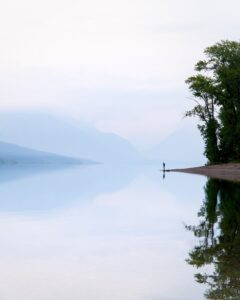
In this article, we delve into the journey of photographer Amirali, whose passion for photography was ignited amidst the challenges of academic life and the chaos of the pandemic. Through his lens, we witness Amirali’s transformative exploration of landscapes, from the serene landscapes of Finland to the mystic scenes of Montana’s nature, where he took a shot that won the Best of the Week.
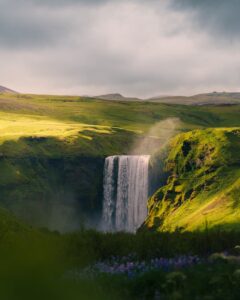
Inspired by a newfound love, Michael transforms the blank pages of his life into a vibrant canvas of nature and exploration. In this article, you can read about the profound lessons learned—from prioritizing living over routine to the art of editing and the magic of impromptu adventures—and witness the evolution of a photographer’s passion amid the breathtaking landscapes of Denmark and Europe.
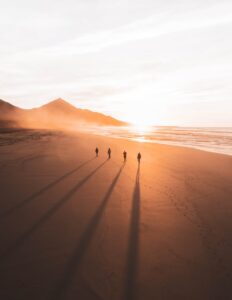
In 2017, Mathieu Morel’s first trip to Iceland marked a turning point in his photography journey. His photograph taken at Cofete Beach in Fuerteventura reflects the lessons he’s learned along the way. Thanks to the support of our community’s votes, he emerged as the winner of our weekly contest.
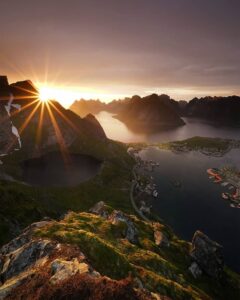
Barbara Thoeny won our weekly contest thanks to a golden hour photo in the beautiful Lofoten Islands. This article teaches us about her winning shot, passion for capturing the northern lights, and most valuable experiences as a solo traveller and photographer.
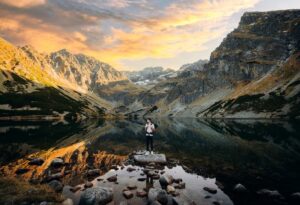
Meet Konstantin, a passionate traveler and photographer inspired by those who use their cameras to capture the world’s beauty and meaning. He aims to make each photo as unforgettable as the moment itself, emphasizing the importance of a positive attitude and cherishing the present moment.
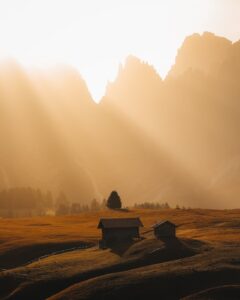
Inspired by his Alpine upbringing, Jannik began photographing in 2021 to capture the world’s beauty. Through his journey, he’s gained insights into creativity, self-appreciation, and light’s transformative role. Join him as he shares the story behind his winning photo and reflects on his photography path.
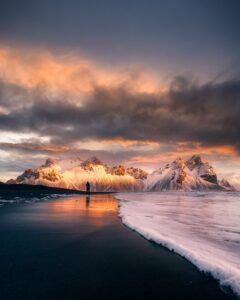
Jidhun, a passionate photographer from south India, started capturing landscapes in 2009. Since then, he has evolved greatly, winning international recognition and awards. His distinctive style shines in meticulous drone photography, and his image “Duck Tales” marked a career turning point, showcasing the potential of drone photography.
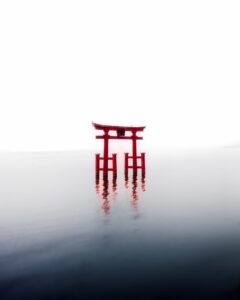
Kelvin’s passion for photography ignited during his six years in Japan, where a shift in perspective led him from a focus on academics to a love for capturing memories. Transitioning from a phone to a camera, he explored the Japanese countryside, uncovering the beauty of snow-capped mountains, bamboo forests, and ancient shrines. In this article, we learn about his winning photo and the philosophy behind his art.
© 2020 Nomadict. All rights reserved.
